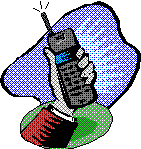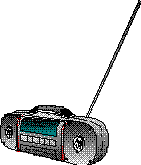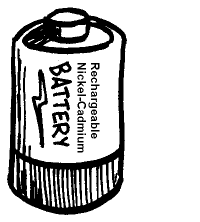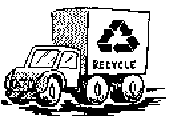

NHDES Technical Bulletin WMD-HW-18 1999


Batteries currently contain
one or more of the following eight metals: mercury, cadmium, lead, zinc,
manganese, nickel, silver, and lithium. When disposed of in an unlined landfill,
a battery can leach its toxic constituents and contaminate groundwater. Mercury
and cadmium pose a special threat in incinerators because they are volatilized
by the incineration process. When incinerated, battery contents can be released
to the environment as inhalable emissions or as leachable elements from the ash.
To promote recycling and proper management of waste batteries, they have been
included in the federal Universal Waste Rule. The Universal Waste Rule for
batteries became effective and uniform in all 50 states in 1996 when the Federal
Mercury-Containing and Rechargeable Battery Act  Management Act was passed. This
law requires states to follow the federal Universal Waste Rule or adopt an
identical state rule for batteries.
Management Act was passed. This
law requires states to follow the federal Universal Waste Rule or adopt an
identical state rule for batteries.
The NH Department of Environmental Services' (DES) Universal Waste Policy is described in this fact sheet. DES believes that recycling is the preferred option for managing waste batteries and that this policy will promote the recycling and proper management of waste batteries.
Universal Wastes
"Universal Wastes" are wastes which meet the
definition of hazardous waste in the NH Hazardous Waste Rules, but
which, during accumulation and transport, pose a relatively low risk compared to
other hazardous wastes. Wastes which DES has determined meet universal waste
criteria include: used antifreeze, mercury-containing lamps and devices, certain
types of hazardous waste batteries, and recalled or suspended hazardous waste
pesticides regulated under the Federal Insecticide, Fungicide, and Rodenticide
Act (FIFRA).

"Universal Waste Batteries"
under this policy are waste batteries which meet the definition of hazardous
waste in the NH Hazardous Waste Rules. These include nickel-cadmium
(ni-cd), small sealed lead acid and hazardous lithium batteries. Lead-acid motor
vehicle batteries are not included under this policy; instead, they are
regulated under Env-Wm 809 of the New Hampshire Hazardous Waste Rules.
Please refer to the DES fact sheet WMD-SW-4 "Management of Used
Motor Vehicle Batteries" for more information. See fact sheet WMD-SW-26 "Dry Cell Batteries"
for battery identification and disposal information for each type of battery.
Generator Status
Under this policy, hazardous waste generators are
not required to include universal waste batteries and other universal wastes in
their calculation of generator status, in accordance with the NH
Hazardous Waste Rules, Env-Wm 503. Universal wastes, when recycled, are
not subject to the generator fee under Env-Wm 512.02.
Universal Waste Consolidation
A facility may collect universal
waste batteries from other sites or generators without a permit, provided the
facility meets the handler requirements described in this fact sheet.
REQUIREMENTS FOR SMALL AND LARGE QUANTITY HANDLERS
A "handler" of waste batteries means: (1) a generator of universal waste batteries, or (2) an owner or operator of a facility that receives universal waste batteries from other handlers, accumulates the waste batteries, and sends the waste batteries to another handler or to a destination facility. Handlers of universal waste batteries must meet the requirements of the Federal Universal Waste Rule, 40 CFR 273. These requirements include the following.
1. Release Prevention
Manage universal waste batteries in a way
that prevents releases to the environment. Any batteries that show evidence of
leaking must be stored in a closed, structurally sound container that is
compatible with the contents of the battery. This container must not be allowed
to leak or spill. See the section titled: "Best Management Practices for
Universal Waste Batteries" in this fact sheet.
2. Universal Waste Handlers Universal Waste Handlers are either large quantity or small quantity handlers based on the quantity of waste managed.
a. Small Quantity Handlers - may accumulate no more than a combined total of 5,000 kilograms of waste batteries and other universal wastes on-site at any time. Approximately 220 five gallon pails (about 50 pounds each) or 20 fifty-five gallon drums (550 pounds each) of waste batteries would equal 11,023 pounds (approximately 5,000 kilograms).3. Activitiesb. Large Quantity Handlers - may accumulate more than 5,000 kilograms, of combined universal wastes by complying with the additional requirements for large quantity handlers found in this fact sheet in the section titled "Additional Requirements for Large Quantity Handlers".
Any handler removing electrolyte and/or generating waste resulting from the activities above must determine if the waste and/or electrolyte is a hazardous or a solid waste. Once the determination has been made, the wastes or electrolyte must be handled in a way that complies with the appropriate federal and state rules. If any of the wastes exhibit a characteristic of a hazardous waste, the handler becomes the generator of that hazardous waste and must comply with the requirements of the New Hampshire Hazardous Waste Rules.(1) sorting batteries by type
(2) mixing battery types in one container
(3) discharging batteries so as to remove the electric charge
(4) regenerating used batteries
(5) disassembling batteries or battery packs into individual batteries or cells
(6) removing batteries from consumer products
(7) removing electrolyte from batteries (although DES discourages this activity by handlers due to increased risk)
4. Labeling
Clearly label or mark each battery or container of
waste batteries with any one of the following phrases: "Universal Waste -
Battery(ies)", "Waste Battery(ies)," or "Used Battery(ies)".
5. Accumulation Time Limits
a. Waste batteries may be accumulated
for no longer than one year from the date the waste batteries are first
generated, or received from another handler. The one year time limit may only be
extended if longer storage time is required to facilitate proper recovery,
treatment, or disposal. However, the need for an extended time must be
demonstrated by the handler.
b. The handler must indicate the length of time the waste batteries have been accumulated starting from the date the batteries became waste or were received. The handler may accomplish this by:
(1) marking or labeling containers with the starting accumulation date, or6. Training(2) maintaining an inventory system on-site that identifies the earliest date waste batteries were added to a container or received from off-site, or
(3) any other method (including those found in 40 CFR 273.15 (c)) which clearly demonstrates the length of time that the universal wastes has been accumulated from the date it becomes a waste or is received.
7. Off-Site Shipments
a. Handlers are prohibited from sending or
taking waste batteries to a place other than another handler, a battery
recycling facility or a hazardous waste treatment, storage or disposal facility.
b. Prior to sending a shipment of waste batteries to another handler or destination facility, the originating handler must ensure that the receiving handler agrees to receive the shipment.
c. Shipments must meet all applicable United States Department of Transportation (US DOT) and New Hampshire Department of Safety (NH DOS) regulations for waste batteries.
d. If a waste battery shipment is rejected by an intermediate handler or destination facility, arrangements must be made by the originating handler to:
(1) receive the waste batteries back when notified that the shipment has been rejected, or8. Exports
(2) send the waste battery shipment to an alternate facility.
ADDITIONAL REQUIREMENTS FOR LARGE QUANTITY HANDLERS
A handler may collect more than 5,000 kilograms of combined universal wastes if he/she complies with the handler requirements in this fact sheet and with the following additional requirements.
1) Prior to collecting more than 5,000 kilograms of combined universal wastes, notify the NH DES of this activity and obtain an EPA Identification Number if you do not already have one.
2) Keep records for 3 years on each shipment of waste received or sent. These records must include
a) the date of each shipment,3) Ensure all employees who handle or have responsibility for managing waste batteries are trained in the handling and emergency procedures appropriate to waste batteries.
b) the quantities of each shipment, and
c) the name and address of the handler or facility from which waste batteries were received or shipped to.
REQUIREMENTS FOR TRANSPORTERS
1. Transporters are not required to obtain a NH hazardous waste transporter registration or use a hazardous waste manifest for waste batteries, but must meet all applicable US DOT and NH DOS regulations.

(a) another handler;3. Transporters who remove waste batteries from their vehicles and stage them for 10 days or less are not required to obtain a hazardous waste transfer facility permit, but are subject to US DOT, NHDOS regulations and must also meet the universal waste handler requirements.
(b) a waste battery recycling facility; or
(c) a hazardous waste treatment, transfer, storage or disposal facility.
4. Transporters taking waste batteries to a foreign destination must comply with the requirements for exports as set forth in 40 CFR 273.56.
REQUIREMENTS FOR HANDLERS AND TRANSPORTERS HANDLING BROKEN OR DAMAGED WASTE BATTERIES
1. Immediately contain and clean up all releases from broken, leaking or damaged batteries.
2. Place any broken or damaged batteries and any residues resulting from breakage or damage in a secure container.
3. The container must be closed and sealed, structurally sound and compatible with the broken batteries. Ensure the container is clean; if it is contaminated with other chemicals, those substances may react with the batteries.
4. Manage, in accordance with the NH Hazardous Waste Rules, any residues resulting from the cleanup of battery spills or leaks which exhibit a characteristic of hazardous waste. The handler is considered the generator of the residues and other cleanup waste and must meet the requirements of Env-Wm 500.
5. Any releases which pose a threat to human health or the environment must be reported immediately to DES at 603-271-3899, Monday through Friday, 8 am to 4 pm or to New Hampshire Department of Safety (NH DOS) Hazmat Unit at 1-800-346-4009, 24 hours/day and to the municipality in which the release occurred.
BEST MANAGEMENT PRACTICES FOR UNIVERSAL WASTE BATTERIES
Batteries can be potentially harmful when stored improperly; there have been fires in New Hampshire due to improperly stored batteries. Because of this risk, the following additional storage practices are recommended.
1. Store rechargeable batteries which are not fully discharged so that their
electrodes do not come in contact with the electrodes of another battery or a
metal object (e.g., the inside of a metal drum).
2. Do not tightly seal
battery containers. This is to avoid the build up of hydrogen gas.
3. Keep
batteries dry. Storage of batteries under a cover or in a building works best,
especially since some batteries can react with the water.
4. Store batteries
away from sources of sparks or flames.
5. Do not store leaking batteries
with non-leaking ones; acids from the insides of some batteries may corrode the
other batteries.
FOR MORE INFORMATION
Questions on batteries should be directed to DES's Household Hazardous Waste Program at (603) 271-2047 or the Hazardous Waste Compliance Section at (603) 271-2942.
A list of battery recycling facilities, copies of other fact sheets, or a copy of the NH Hazardous Waste Rules are available from DES's Public Information and Permitting Office at (603) 271-2975, (TDD Access: Relay NH 1-800-735-2964). Copies of DES fact sheets and rules are also available on DES's web site at www.state.nh.us/des.
Information on US DOT regulations can be obtained from the NH Department of
Safety, Hazardous Materials Unit at (603) 271-3349.
Disclaimer: Information contained in this fact sheet is current as of March 24, 1999. Policy and regulatory changes occurring after this date may affect part or all of this information. For questions on the status of this information, contact DES at 603-271-2942.